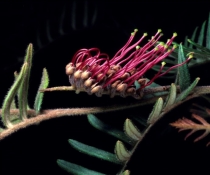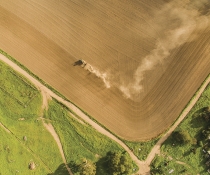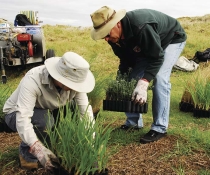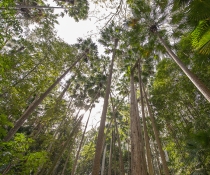Australia’s loneliest tree is also one of the world’s rarest
Meet the Mongarlowe mallee. With only six individuals in existence, it may be Australia’s loneliest tree. It also poses the question – what can we do for a species that has so few individuals left?

In August 1985, Back to the Future was number one in the box office, Tears for Fears and Huey Lewis and the News were battling it out on the radio airwaves and Mary Joe Fenandez became the youngest player to win a match at the US Tennis Open at just 14 years old.
Amid all of this, Ms R Jean, a landholder near Braidwood NSW, was walking on one of her local trails when she spotted an extremely unusual looking eucalypt. Its distinct, curved leaves presented a mystery, looking like they belonged to a plant from an entirely different group. This prompted her to bring a fragment of the curious plant to the Australian National Botanic Gardens in Canberra, and a closer look at the specimen revealed that Ms Jean had discovered a unique and entirely new species of mallee eucalypt.
This mallee would continue to perplex scientists and researchers up until this very day.
A relic from yesterday
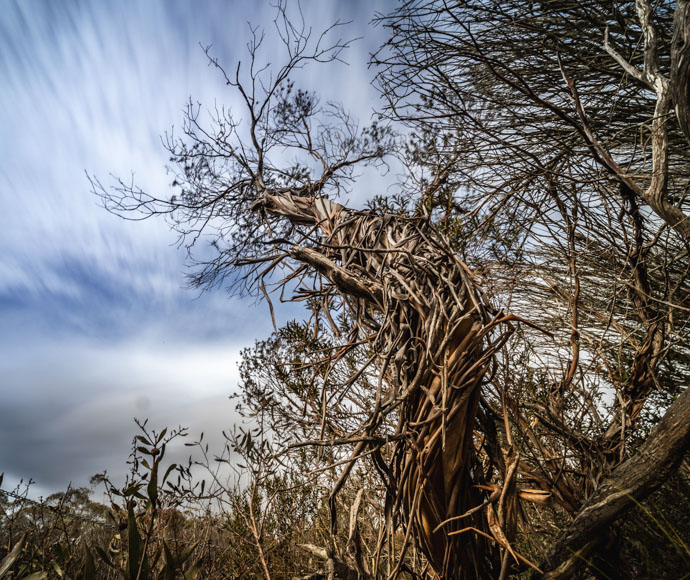 The Mongarlowe mallee, also known as the 'ice age gum', may be Australia's loneliest tree. Since its discovery in 1985, extensive searching has revealed the existence of just six trees from four sites.
The Mongarlowe mallee, also known as the 'ice age gum', may be Australia's loneliest tree. Since its discovery in 1985, extensive searching has revealed the existence of just six trees from four sites.
These trees aren't just rare, they're also old. Potentially Ancient Egypt, pre-Roman Empire or possibly even older, hence the name ice age gum. Estimates put them at anywhere from 3,000 to 13,000 years old.
We can tell these trees are old by looking at a structure at the base of the tree called the lignotuber. This bulbous 'organ' stores food and, in many eucalypt species, it contains a mass of hidden buds that new shoots grow from when the tree is impacted by disturbances such as fire. The size of this lignotuber can give us an idea of the tree's age. If we know approximately how much a lignotuber grows over time, then we can guess at how long the plant has been growing for. The largest Mongarlowe mallee has a lignotuber that's 7.5 metres by 12 metres. It's unlikely the lignotuber grows more than 2mm each year (it could be far less), meaning this tree is at least 3,000 years old!
More questions than answers
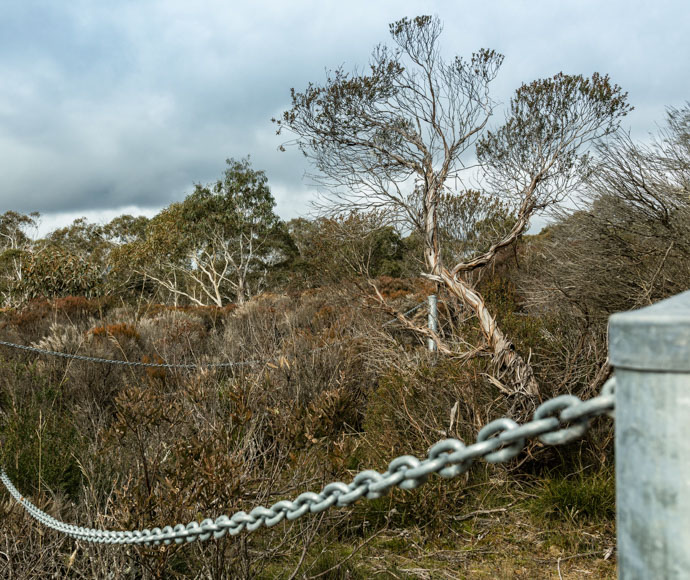 While this tree might be lonely, it does get plenty of company from the humans who care about it. For Saving our Species Threatened Species expert Genevieve (Gen) Wright, a closer look at the Mongarlowe mallee only reveals more questions.
While this tree might be lonely, it does get plenty of company from the humans who care about it. For Saving our Species Threatened Species expert Genevieve (Gen) Wright, a closer look at the Mongarlowe mallee only reveals more questions.
"This is a unique Eucalypt, and its survival in the wild is dependant on the last known adult plants – of which there are only six," says Gen.
"We think these trees are very old, and could be relics of past climates where they may have been more widespread."
What's more, the flowering and seed production of this tree is very strange.
"Production of viable seed (seed capable of germinating) is difficult because the distance between all of the known trees is further than any self-respecting pollinator would want to travel," explains Gen.
This means the only pollen available to all Mongarlowe mallee trees is from its own flowers, which won't produce viable seed, or from other eucalypt species that are flowering nearby at the same time. Seed produced with the pollen from these nearby trees result in hybrids, which is a eucalypt that is a genetic mix of two species and does not produce a true Mongarlowe mallee tree.
The only way to fix this problem is hand pollination, and in 2001/2002 the first viable seed was produced using this method. Back then all the Mongarlowe mallee trees were flowering at the same time, but fast forward to 2020 and these rare eucalypts have fallen out of sync.
"Each plant is now flowering at a slightly different time with just a short period of overlap, making repeating this hand cross-pollination extremely challenging," says Gen.
"To complicate things even more, some of the plants are just not flowering at all!"
Why so rare?
 We can take some comfort from this tree's situation. The Mongarlowe mallee's habitat has remained largely unaltered since European settlement, and its decline is probably a natural process that has occurred over thousands of years, not at the hands of human activity.
We can take some comfort from this tree's situation. The Mongarlowe mallee's habitat has remained largely unaltered since European settlement, and its decline is probably a natural process that has occurred over thousands of years, not at the hands of human activity.
So what does conservation for a species like this look like? To take drastic, interventionist action would disrupt what is a natural process – but don't worry, there's still plenty to keep us busy. The focus is instead on the long-term protection of these special trees and their habitat, as they're probably going to live for at least a few more hundred years.
All trees occur on private land, so maintaining a positive connection with landholders is incredibly important, as they are the true custodians of these special plants. We also keep their location top secret, as a major threat to this botanical curiosity is increased visitation and specimen collection from overly enthusiastic members of the public.
Hand-pollination is planned at the next opportunity, with the hope of producing viable seed as a result, and the Australian National Botanic Gardens in Canberra is ready to grow any seed if this is successful but is also trialling propagation techniques for the species using special grafting techniques. This could all lead to an ex-situ population of the plant, so we can further study it, and could it one day become a garden plant like the Wollomi Pine.
"We have so much to learn about this plant… how long does it take to grow and how old are they? Are they the oldest eucalypts in Australia? Will we ever find another one?" says Gen.
One thing is certain – we're lucky there's a team of people dedicated to preserving Australia's mysterious Mongarlowe mallee tree for many years into the future.







